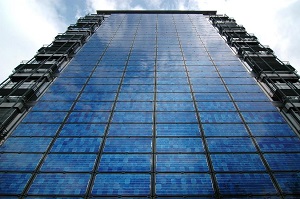- Distributed Solar PV
- Building Innovations
- Energy Storage
- Conferences and Events
Saving the Sun for Later: Opportunities and Barriers for Solar PV plus Energy Storage

At the recent Better Buildings Summit, I had the opportunity to moderate a session with Karen Butterfield of Stem, Ben Myers of Boston Properties, and Jessie Denver with the City of San Francisco to discuss their strategies and experiences related to adopting solar PV plus energy storage. It was a spirited discussion and we received in-depth, informed questions from the audience on feasibility, system costs, lessons learned, and how to make the business case for project deployments.
Lessons Learned
Stem opened the session and provided many great lessons learned from its experience to date:
- Solar PV plus energy storage can be applied to save energy costs and demand charges, but a concise site- and tariff-specific use case is required to make a project work.
- Robust software is required to integrate building load, solar PV system performance, and battery deployment scenarios to generate cost savings.
- Utility partnerships can improve project economics and help make the business case.
Boston Properties highlighted that, as part of its sustainability plan, it has installed solar PV at many of its properties across the United States and has reduced its energy charges. The company is now looking at solar PV plus energy storage to guarantee tariff-specific demand charges as well. While Boston Properties has yet to complete a project, it is in the process of negotiating contracts using a solar PV plus energy storage power purchase agreement with a shared demand charge savings component.
Whereas Boston Properties’ drivers were financial and sustainability, the City of San Francisco’s drivers are resilience and sustainability. The city recently won a US Department of Energy SunShot grant to study the feasibility of installing solar PV plus energy storage at critical facilities to provide power in case of an earthquake or another emergency. San Francisco is currently selecting pilot sites and completing its feasibility analysis. As part of the project, the city and its project partners have created a free online tool to help others assess the feasibility of using solar PV plus energy storage for resilience.
Growth of Distributed Solar PV plus Energy Storage
The topics and session discussion at the Better Buildings Summit highlighted several key issues that Guidehouse sees as important for the growth of distributed solar PV plus energy storage markets:
- The ability of energy storage software platforms to forecast energy and demand charge savings for anticipated building load and battery deployment scenarios is critical to the business case for these projects.
- The multitude of regulations and rate structures affecting both solar and energy storage, and their expected evolutions, will increase the value of project design and operating software by helping lower customer acquisition and development costs.
- As with standalone energy storage deployments, the predictability of costs savings from these projects will further the development of financing innovation to drive the deployment of these technologies.
- The value of resilience and resulting business case criteria will differ greatly between solar PV plus energy storage customers. For example, the resilience value of solar PV plus energy storage for commercial office building occupants differs from that for a municipality like the City of San Francisco. Building occupants likely have a business continuity plan to address long-term energy outages at their facilities while the city is charged with critical first responder responsibilities in the event of a disaster or emergency.